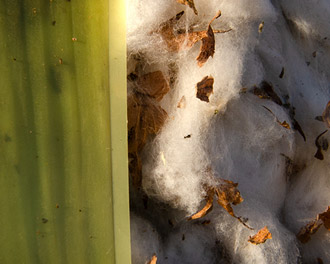The reasons for this problem can be many; such as a damaged net from poor handling when loading into the baler — creating broken threads that can be caught. More likely will be the poor cutting action in the baler as the net roll tension is not set correctly, which presents a slack web of net for the knife to try and cut, creating a poor and un-even net tail.
This series of pictures shows how easily one thread can be pulled from the netwrap web, splitting the net into two. The long franze thread in the second picture is typical of what might be found after a poor cutting action in the baler, which can quickly lead to the stitch being pulled out and the net separating.
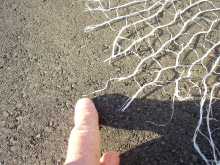 |
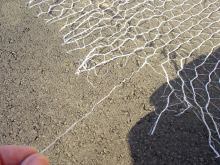 |
|
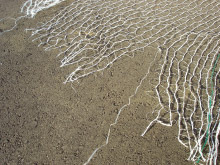 |
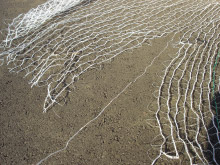 |
|
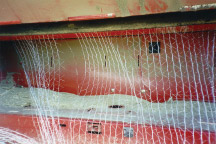 |
Very often, when this happens it is easy to see the franze thread having been pulled out of the net, making the net come off the roll in two or more pieces. Unfortunately, the loose thread can very quickly be caught up in the fast turning feed rollers on the baler, which will immediately begin to pull the entire net back onto the rollers causing it to wrap around the feed roller.
If the baler produces a bale with part of the net missing, as we have seen, the correct action would be to stop baling, remove the net tail from the baler feed system and pull off any net that has begun to split, cut cleanly and re-insert into the baler.
If the problem persists, the net tension system should be inspected and tension increased on the net roll to ensure the net is held tightly at the point when it is cut, this will ensure a clean and uniform cut of the net, avoiding long tails.


